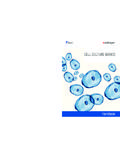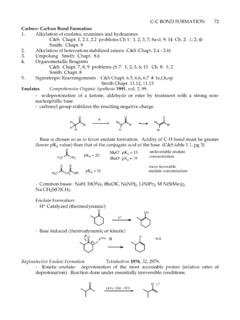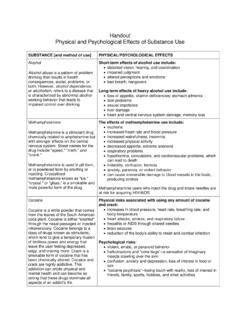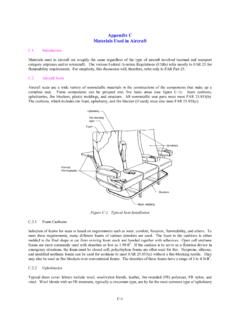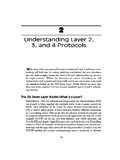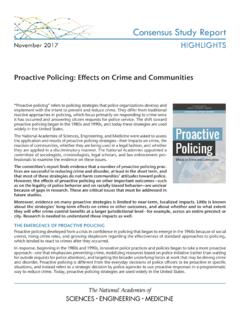Transcription of CELL CULTURE BASICS - Vanderbilt University
1 CELL CULTURE BASICS . Cell CULTURE BASICS Handbook B-087243 0110. Contents Introduction .. 1. Purpose of the Handbook .. 1. Introduction to Cell CULTURE .. 2. What is Cell CULTURE ? .. 2. Finite vs Continuous Cell Line .. 2. CULTURE Conditions .. 2. Cryopreservation .. 2. Morphology of cells in CULTURE .. 3. Applications of Cell CULTURE .. 3. Cell CULTURE Laboratory .. 4. Safety .. 4. Biosafety Levels .. 4. SDS .. 5. Safety Equipment .. 5. Personal Protective Equipment (PPE) .. 5. Safe Laboratory Practices .. 5. Cell CULTURE Equipment .. 6. Basic Equipment .. 6. Expanded Equipment .. 6. Additional Supplies .. 6. Cell CULTURE Laboratory .. 7. Aseptic Work Area .. 7. Cell CULTURE Hood .. 7. Cell CULTURE Hood Layout .. 8. Incubator .. 9. Storage .. 9. Cryogenic Storage .. 10. Cell Counter .. 10. Cell CULTURE BASICS | i Contents Aseptic Technique .. 11. Introduction .. 11. Sterile Work Area .. 11. Good Personal Hygiene.
2 11. Sterile Reagents and Media .. 12. Sterile Handling .. 12. Aseptic Technique Checklist .. 13. Biological Contamination .. 14. Introduction .. 14. Bacteria .. 14. Yeasts .. 15. Molds .. 15. Viruses .. 16. Mycoplasma .. 16. Cross-Contamination .. 17. Using Antibiotics .. 17. Cell CULTURE BASICS .. 18. Cell Lines .. 18. Selecting the Appropriate Cell Line .. 18. Acquiring Cell Lines .. 18. CULTURE Environment .. 19. Adherent vs Suspension CULTURE .. 19. Media .. 20. pH .. 21. CO2 .. 21. Temperature .. 21. Cell Morphology .. 22. Mammalian cells .. 22. Variations in Mammalian Cell Morphology .. 22. Morphology of 293 cells .. 23. Insect cells .. 24. Morphology of Sf21 cells .. 24. Morphology of Sf9 cells .. 25. ii | Cell CULTURE BASICS Contents Methods .. 26. Guidelines for Maintaining Cultured cells .. 26. What is Subculture? .. 26. When to Subculture? .. 27. Media Recommendations for Common Cell Lines.
3 28. Dissociating Adherent cells .. 30. TrypLE Dissociation Enzymes .. 30. Subculturing Adherent cells .. 31. Materials Needed .. 31. Protocol for Passaging Adherent cells .. 31. Notes on Subculturing Adherent Insect cells .. 32. Subculturing Suspension cells .. 33. Passaging Suspension Cultures .. 33. Suspension CULTURE Vessels .. 33. Materials Needed .. 34. Protocol for Passaging Suspension cells .. 34. Notes on Subculturing Suspension Insect cells .. 36. Freezing cells .. 37. Cryopreservation .. 37. Guidelines for Cryopreservation .. 37. Freezing Medium .. 38. Materials Needed .. 38. Protocol for Cryopreserving Cultured cells .. 39. Thawing Frozen cells .. 40. Guidelines for Thawing .. 40. Materials Needed .. 40. Protocol for Thawing Frozen cells .. 40. Support Protocols .. 41. Counting cells in a Hemacytometer .. 41. Trypan Blue Exclusion .. 42. Concentrating cells .. 42. Cell CULTURE BASICS | iii Appendix.
4 43. Troubleshooting .. 43. Cell CULTURE Products .. 44. Cell Lines .. 44. Media for Mammalian Cell CULTURE .. 45. Media for Insect Cell CULTURE .. 46. Serum Products for Cell CULTURE .. 46. Laboratory Reagents for Cell CULTURE .. 47. Antibiotics and Antimycotics .. 48. Accessory Products for Cell CULTURE .. 49. Growth Factors and Purified Proteins .. 49. Transfection and Selection .. 50. Transfection Reagents .. 51. Additional Resources .. 52. Mammalian and Insect Cell Cultures .. 52. Cell and Tissue Analysis .. 52. Transfection Selection Tool .. 52. Safety Data Sheets .. 52. Certificate of Analysis .. 52. Technical Support .. 53. iv | Cell CULTURE BASICS Introduction Purpose of the Handbook Cell CULTURE BASICS Companion Handbook is a supplement to the Cell CULTURE BASICS instructional videos available online at The handbook and videos are intended as an introduction to cell CULTURE BASICS , covering topics such as getting familiar with the requirements of a laboratory dedicated to cell CULTURE experiments, laboratory safety, aseptic technique, and microbial contamination of cell cultures, as well as providing basic methods for passaging, freezing, and thawing cultured cells .
5 The information and guidelines presented in the handbook and the instructional videos focus on cell lines (finite or continuous) and omit experiments and techniques concerning primary cultures such as isolating and disaggregating tissues. Note that while the BASICS of cell CULTURE experiments share certain similarities, cell CULTURE conditions vary widely for each cell type. Deviating from the CULTURE conditions required for a particular cell type can result in different phenotypes being expressed; we therefore recommend that you familiarize yourself with your cell line of interest, and closely follow the instructions provided with each product you are using in your experiments. Cell CULTURE BASICS | 1. Part 1. Introduction Introduction to Cell CULTURE What is Cell CULTURE ? Cell CULTURE refers to the removal of cells from an animal or plant and their subsequent growth in a favorable artificial environment.
6 The cells may be removed from the tissue directly and disaggregated by enzymatic or mechanical means before cultivation, or they may be derived from a cell line or cell strain that has already been already established. Primary CULTURE Primary CULTURE refers to the stage of the CULTURE after the cells are isolated from the tissue and proliferated under the appropriate conditions until they occupy all of the available substrate ( , reach confluence). At this stage, the cells have to be subcultured ( , passaged) by transferring them to a new vessel with fresh growth medium to provide more room for continued growth. Cell Line After the first subculture, the primary CULTURE becomes known as a cell line or subclone. Cell lines derived from primary cultures have a limited life span ( , they are finite; see below), and as they are passaged, cells with the highest growth capacity predominate, resulting in a degree of genotypic and phenotypic uniformity in the population.
7 Cell Strain If a subpopulation of a cell line is positively selected from the CULTURE by cloning or some other method, this cell line becomes a cell strain. A cell strain often acquires additional genetic changes subsequent to the initiation of the parent line. Finite vs Continuous Cell Line Normal cells usually divide only a limited number of times before losing their ability to proliferate, which is a genetically determined event known as senescence; these cell lines are known as finite. However, some cell lines become immortal through a process called transformation, which can occur spontaneously or can be chemically or virally induced. When a finite cell line undergoes transformation and acquires the ability to divide indefinitely, it becomes a continuous cell line. CULTURE Conditions CULTURE conditions vary widely for each cell type, but the artificial environment in which the cells are cultured invariably consists of a suitable vessel containing a substrate or medium that supplies the essential nutrients (amino acids, carbohydrates, vitamins, minerals), growth factors, hormones, and gases (O2, CO2), and regulates the physico- chemical environment (pH, osmotic pressure, temperature).
8 most cells are anchorage- dependent and must be cultured while attached to a solid or semi-solid substrate (adherent or monolayer CULTURE ), while others can be grown floating in the CULTURE medium (suspension CULTURE ). Cryopreservation If a surplus of cells are available from subculturing, they should be treated with the appropriate protective agent ( , DMSO or glycerol) and stored at temperatures below 130 C (cryopreservation) until they are needed. For more information on subculturing and cryopreserving cells , refer to the Guidelines for Maintaining Cultured cells , page page 26 page page 39. 2 | Cell CULTURE BASICS Part 1. Introduction Morphology of cells in CULTURE cells in CULTURE can be divided in to three basic categories based on their shape and appearance ( , morphology). Fibroblastic (or fibroblast-like) cells are bipolar or multipolar, have elongated shapes, and grow attached to a substrate.
9 Epithelial-like cells are polygonal in shape with more regular dimensions, and grow attached to a substrate in discrete patches. Lymphoblast-like cells are spherical in shape and usually grown in suspension without attaching to a surface. Applications of Cell CULTURE Cell CULTURE is one of the major tools used in cellular and molecular biology, providing excellent model systems for studying the normal physiology and biochemistry of cells ( , metabolic studies, aging), the effects of drugs and toxic compounds on the cells , and mutagenesis and carcinogenesis. It is also used in drug screening and development, and large scale manufacturing of biological compounds ( , vaccines, therapeutic proteins). The major advantage of using cell CULTURE for any of the these applications is the consistency and reproducibility of results that can be obtained from using a batch of clonal cells . Cell CULTURE BASICS | 3.
10 Cell CULTURE Laboratory Safety In addition to the safety risks common to most everyday work places such as electrical and fire hazards, a cell CULTURE laboratory has a number of specific hazards associated with handling and manipulating human or animal cells and tissues, as well as toxic, corrosive, or mutagenic solvents and reagents. The most common of these hazards are accidental punctures with syringe needles or other contaminated sharps, spills and splashes onto skin and mucous membranes, ingestion through mouth pipetting, and inhalation exposures to infectious aerosols. The fundamental objective of any biosafety program is to reduce or eliminate exposure of laboratory workers and the outside environment to potentially harmful biological agents. The most important element of safety in a cell CULTURE laboratory is the strict adherence to standard microbiological practices and techniques. Biosafety Levels The regulations and recommendations for biosafety in the United States are contained in the document Biosafety in Microbiological and Biomedical Laboratories, prepared by the Centers for Disease Control (CDC) and the National Institutes of Health (NIH), and published by the Department of Health and Human Services.
